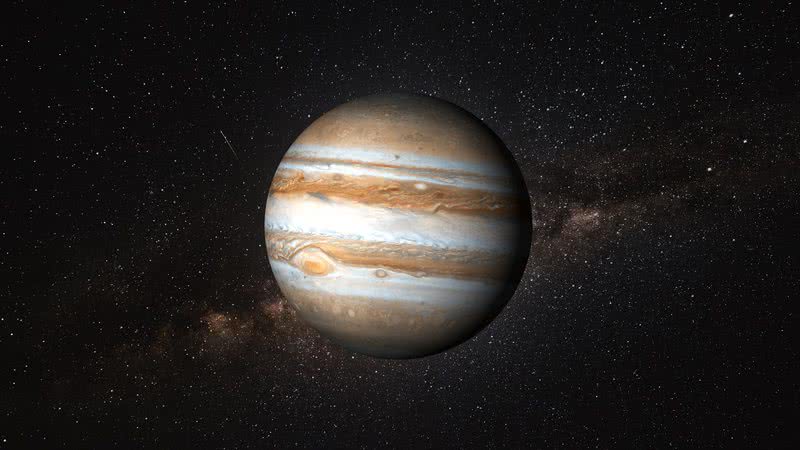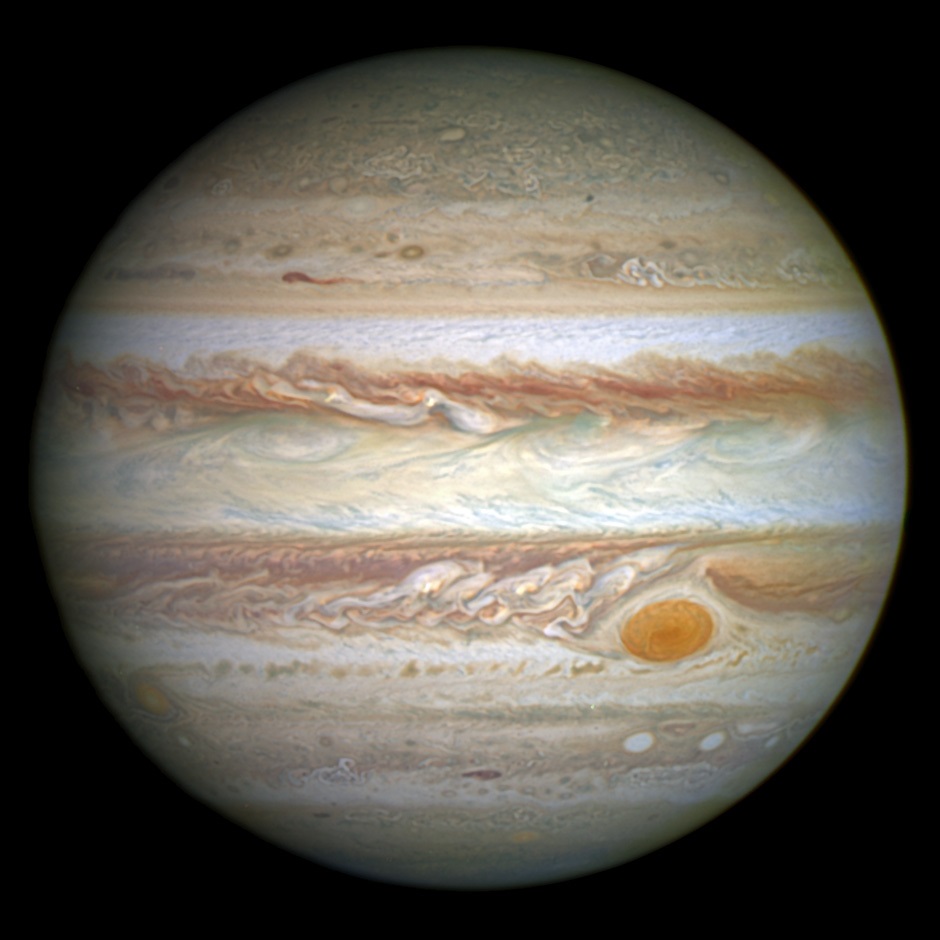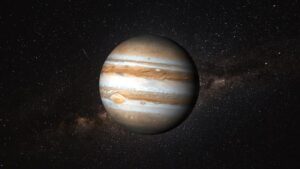The Stormy Giant: Exploring Jupiter’s Eternal Mysteries
Jupiter, the largest planet in our solar system, has been a source of wonder and fascination for centuries. Its immense size and swirling, colorful clouds make it a celestial spectacle like no other. Known as the “Stormy Giant,” Jupiter is home to some of the most extreme and enduring weather phenomena in the solar system, making it a key focus for scientists seeking to unravel its eternal mysteries.
The most iconic feature of Jupiter is the Great Red Spot, a massive storm larger than Earth that has raged for over 350 years. This colossal vortex, with wind speeds reaching up to 400 miles per hour, is a testament to Jupiter’s dynamic and turbulent atmosphere. Despite extensive study, the precise mechanisms that sustain the Great Red Spot remain elusive, leaving scientists to ponder its longevity and eventual fate.

Jupiter’s atmosphere is a complex tapestry of hydrogen, helium, and trace elements, creating vibrant bands of color that encircle the planet. These bands are divided into zones and belts, with powerful jet streams driving their movement in opposite directions. The interactions between these bands give rise to storms and eddies, further highlighting the chaotic nature of Jupiter’s weather.
Beyond its atmosphere, Jupiter’s magnetosphere is another marvel. The planet’s magnetic field is the strongest in the solar system, extending millions of miles into space and creating intense radiation belts. This magnetic shield not only influences Jupiter’s moons but also shapes the behavior of charged particles in its vicinity, producing stunning auroras at its poles—brighter and more energetic than any seen on Earth.
Speaking of moons, Jupiter’s 92 confirmed satellites form a miniature solar system of their own. Among them, the four Galilean moons—Io, Europa, Ganymede, and Callisto—are particularly intriguing. Io is the most volcanically active body in the solar system, while Europa’s icy crust conceals a subsurface ocean that may harbor conditions suitable for life. Ganymede, the largest moon in the solar system, boasts its own magnetic field, and Callisto’s heavily cratered surface provides a window into the solar system’s early history.

The Juno spacecraft, launched by NASA in 2011, has been instrumental in deepening our understanding of Jupiter. Orbiting the planet since 2016, Juno has provided breathtaking images and invaluable data about Jupiter’s composition, gravity field, magnetic field, and polar regions. Among its discoveries is the revelation of ammonia-rich storms and a deeper understanding of the planet’s internal structure, which suggests a diffuse, possibly partially dissolved core.
Despite these advancements, Jupiter still guards many of its secrets. What lies beneath its thick clouds? How did this gas giant form, and what role did it play in shaping the solar system? Could its moons, particularly Europa, support life? These questions continue to drive scientific exploration and inspire curiosity.
Jupiter’s eternal mysteries remind us of the vastness and complexity of our universe. As we continue to explore this stormy giant, we not only learn about the planet itself but also gain insights into the origins of our solar system and the potential for life beyond Earth. Jupiter stands as a beacon of discovery, challenging us to push the boundaries of human knowledge and imagination.













Post Comment